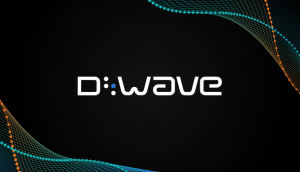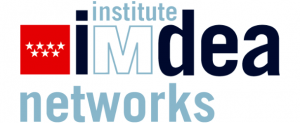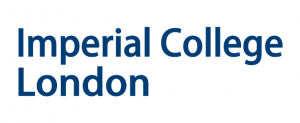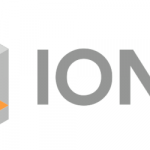Quantum News Briefs June 2: D-Wave & Interpublic Group partner on quantum-powered advertising optimization; IMDEA Software and IMDEA Networks work to deploy in the Community of Madrid “MadQCI”: Europe’s largest quantum network; Quantum sensor-developed tested aboard British Royal Navy ship + MORE

Quantum News Briefs June 2: D-Wave & Interpublic Group partner on quantum-powered advertising optimization; IMDEA Software and IMDEA Networks work to deploy in the Community of Madrid “MadQCI”: Europe’s largest quantum network; Quantum sensor-developed tested aboard British Royal Navy ship + MORE.
D-Wave & Interpublic Group partner on quantum-powered advertising optimization

D-Wave Quantum Inc. and Interpublic Group, one of the world’s premier global advertising and marketing services companies, today announced a partnership that will see the companies work together on quantum computing applications that fuel innovation in marketing investments and strategy.
D-Wave and IPG will collaborate on the research and development of quantum-hybrid applications designed to address optimization in marketing campaigns. Together, the companies will use D-Wave’s quantum computers and hybrid solvers, accessible through the Leap™ quantum cloud service, coupled with IPG’s own data assets, to create quantum applications geared to building high-value audiences for marketers in a variety of settings. IPG recently launched a pilot program with D-Wave to build marketing optimization equations for one of the company’s top 20 clients to optimize campaigns in a retail environment.
“At IPG, we understand that every customer is unique, with very personal passions, behaviors and motivations,” said Philippe Krakowsky, CEO of IPG. “By working with D-Wave and adopting quantum technology as part of our tech stack, we believe we can uncover an even greater collection of data-driven insights to deliver more relevant and effective marketing for our clients, at scale.”
“In today’s highly connected and deeply digital world, consumers are met with brand messages daily. Breaking through to reach the right customer at the right time remains a difficult challenge given the vast number of variables to consider,” said Dr. Alan Baratz, CEO of D-Wave. “We’re excited to work with IPG to bring the power of quantum to advertising optimization, more efficiently harnessing a massive amount of data to create hyper-targeted campaigns that drive desired outcomes for brands.” Click here to read the June 1 announcement in-entirety.
IMDEA Software and IMDEA Networks work to deploy in the Community of Madrid “MadQCI”: Europe’s largest quantum network
 IMDEA Software and IMDEA Networks Institutes are participating with six other partners (Instituto Nacional de Técnica Aeroespacial, Centro Español de Metrología, Fundación Vithas, Universidad Autónoma de Madrid, Universidad Politécnica de Madrid and Universidad Complutense de Madrid) in the MADQuantum-CM project, funded by the Community of Madrid, the Spanish State through the Plan for Recovery, Transformation and Resilience, and the European Union through the NextGeneration EU funds. The objective of the project is the expansion of MadQCI, the new quantum communications network of the Community of Madrid. Quantum News Briefs summarizes the AAAS announcement.
IMDEA Software and IMDEA Networks Institutes are participating with six other partners (Instituto Nacional de Técnica Aeroespacial, Centro Español de Metrología, Fundación Vithas, Universidad Autónoma de Madrid, Universidad Politécnica de Madrid and Universidad Complutense de Madrid) in the MADQuantum-CM project, funded by the Community of Madrid, the Spanish State through the Plan for Recovery, Transformation and Resilience, and the European Union through the NextGeneration EU funds. The objective of the project is the expansion of MadQCI, the new quantum communications network of the Community of Madrid. Quantum News Briefs summarizes the AAAS announcement.
MADQuantum-CM aims to show how quantum security solutions can be used throughout the scientific network infrastructure of the Community of Madrid in a transparent manner. Among its aims is also to create several testbeds and demonstrations to show how quantum networks and communications can be used by potential stakeholders. As Berberana points out, two of the areas to be explored in this project will be the application of quantum cryptography and quantum communications to support new networks, such as the future 6G networks.
In addition, it seeks to develop an innovation and training ecosystem to help grow the technology and supply chains for quantum communications technologies and services in Madrid and Spain (through collaboration with other regional quantum communications projects). The network infrastructure deployed by the project is expected to form the basis of a permanent quantum network that will enable continued innovation beyond its lifetime. Ultimately, these projects build on the extensive quantum communications expertise of their participants. Click here to read the announcement in-entirety.
Quantum sensor-developed tested aboard British Royal Navy ship

A prototype quantum sensor built at Imperial, with potential application in GPS-free navigation, has been tested in collaboration with the British Royal Navy.
The test marks an important step in bringing new quantum technologies out of the lab and into real-world settings. Many navigation systems today rely on global navigation satellite systems (GNSS), such as GPS, which uses signals from satellites orbiting the Earth. However, GPS navigation is not always accessible, obstacles like tall buildings can easily block the satellite signals, and they are also susceptible to jamming, imitation, or denial, thereby preventing accurate navigation. It has been estimated that a single day of satellite service denial would incur a cost of £1 billion to the UK.
The Imperial College London team unveiled their first ‘quantum compass’ prototype in 2018, and have since been refining the technology to the point where it can now be tested in the field. The latest Imperial quantum sensor was integrated into a Qinetiq NavyPOD – an interchangeable rapid prototyping platform, before setting sail to London aboard a new Royal Navy research ship the XV Patrick Blackett.
The experiment is the first step towards understanding the application and exploitation of quantum-enabled navigation, which could provide significant navigational advantages when operating in satellite-denied areas.
Commander Michael Hutchinson, Commanding Officer of XV Patrick Blackett, said: “Working with Imperial College London on this project has been an exciting and interesting opportunity for all of us. So far, the testing has gone well but the technology is still in its very early stages. It’s great to be a part of Royal Navy history.”
The Imperial quantum sensor is a new type of accelerometer. Accelerometers measure how an object’s velocity changes over time. By combining this information with rotation measurements and the initial position of the object, the current location can be calculated. Click here to read the original article on IndiaEducationDiary.
Nvidia & Orca discover mix of quantum processors’ standard GPUs can speed up the machine learning process


British quantum computing company Orca is working with Nvidia on speeding up and improving the machine learning process. Ryan Morrison of TechMonitor recently wrote how about their new hybrid system sends some of the processing off to the quantum processor, which the company says improves the output quality and speeds up the training time. Quantum News Briefs summarizes.
Under the hybrid system a combination hybrid classical and quantum algorithm can be split between Nvidia GPUs which are traditionally used in machine learning, and newer quantum processing units (QPUs) from Orca. William Clements, head of machine learning at Orca Computing told Tech Monitor: “It is good to think of the QPU as something that helps the GPU in the learning process”.
Orca has been focusing on image generation and analysis techniques with its quantum machine learning. This is the type of AI model that powers tools like Stable Diffusion and Midjourney. Aside from creating images from a text prompt, the models also allow for the creation of synthetic images for use in medicine, or looking for changes in environmental factors across a large image library.
They have demonstrated the ability to generate very high quality images using the combination of a photonic QPU and eight large GPUs. They found it was both faster and an improvement over the GPU cluster operating alone. “It is there to help the classical system learn to approximate a distribution. In the case of images, it’s a distribution of pixels. What the GPU does is provide an initial rich distribution that you wouldn’t have any other way of producing,” explained Clements. Click here to read the TechMonitor in-entirety.
Sandra K. Helsel, Ph.D. has been researching and reporting on frontier technologies since 1990. She has her Ph.D. from the University of Arizona.



















